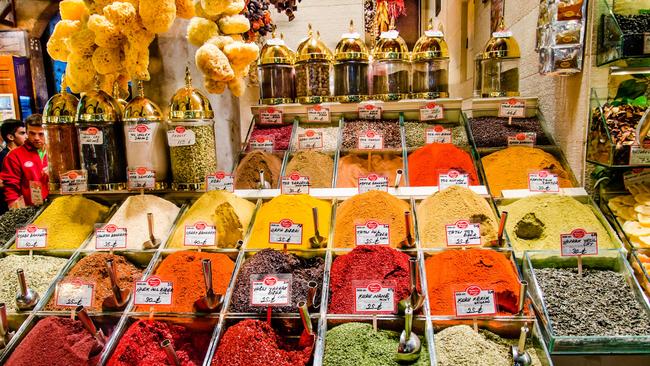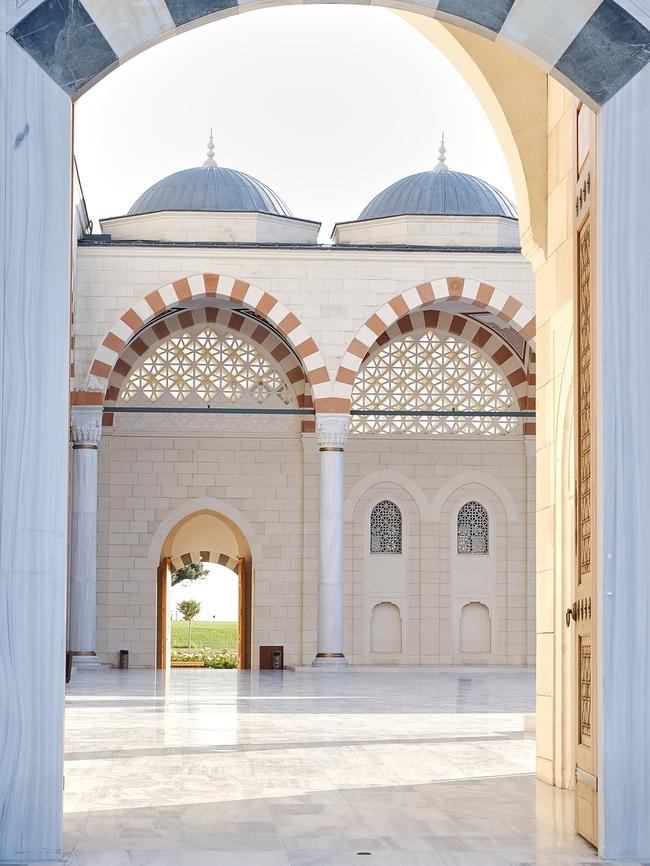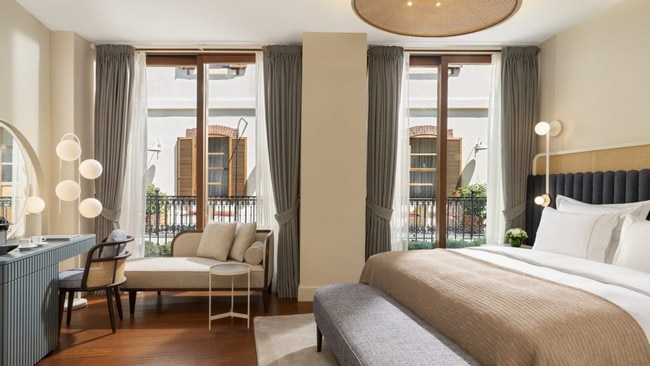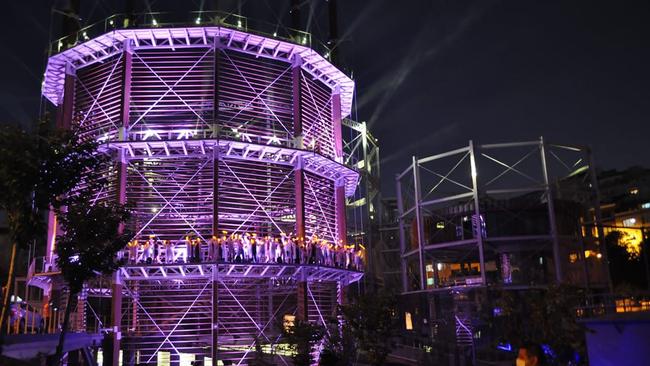How Istanbul is reinventing itself
One of the world’s oldest tourist destinations has a shiny new layer of 21st-century attractions.

Perhaps given the storied location, it was only a matter of time. One of the world’s oldest and best-known tourist destinations is suddenly packed with 21st-century allure. Istanbul – formerly known as Constantinople, itself formerly known as Byzantium, itself formerly known as Lygos – has a new layer to its renowned palimpsest.
Last July, Fatih Tutak, a chef who has worked at some of the world’s top restaurants, including Noma in Copenhagen and Nihonryori in Tokyo, reopened his buzzy modernist restaurant Turk in the trendy Bomonti neighbourhood (it debuted in December 2019, just before the pandemic). In August, a Mandarin Oriental opened on the Bosphorus, the epic waterway that divides the city’s European and Asian sides. On the opposite shore a power plant in the Kadikoy district has been converted into an arts complex called Muze Gazhane, or Gasworks Museum, which bundles an array of museums (one dedicated to climate, another to comics), performance spaces and art exhibits. Last September, in Galata, one of the oldest parts of the city, the Ecole St Pierre hotel arrived on the scene as a stylish conversion of a 180-year-old French school that includes some 13th-century city walls.

Cornerstones are changing in a city where the “New Mosque” is 357 years old. In Taksim Square, the grand plaza that has long been the heart of the modern city, the Ataturk Culture Centre, which includes an opera house and art galleries, opened in October, the same month that an international contemporary art fair debuted at Tersane, a new venue that has revived the historic Halic Shipyard in the Golden Horn district. And the megaproject Galataport, an underground cruise ship terminal, which also launched in October, now anchors a part of the city that had been derelict and inaccessible since the late 19th century. Indeed there is now a truly new mosque, Grand Camlica, completed in 2019 as one of the largest in Turkey.
The city has had its so-called “Istancool” moments in years past – a Newsweek cover story in 2005 called it “Europe’s hippest city” – but this new moment, like so much of pandemic life, seems largely about reinvention.
Turkey is trying to position itself more as a luxury destination
Even centuries-old tourist draws have new life. The Blue Mosque is wrapping up a major renovation. As of last July, visitors can take rooftop tours of the Grand Bazaar. The 5th-century Theodosius Cistern now hosts an hourly state-of-the-art light show. There’s an elegant new restaurant atop the 18th-century Cagaloglu Hamam, while previously off-limits parts of the Ottoman sultan’s sweeping spread, Topkapi Palace, have been restored and opened to the public.

“Old, dusty things have a new shine or sheen to them,” says Esin Kara, who has been running her citywide tours for 22 years. “It gives the tours and the experience a new energy.”
Istanbul has used the pandemic’s pause to reframe its travel identity. “Turkey is trying to position itself more as a luxury destination,” says Maria Alvarez, department head of Tourism Administration at the city’s Bogazici University. She adds that Turkey’s economic crisis – its lira is in freefall as one of the world’s worst-performing currencies of last year – puts luxury within reach of those with relatively modest budgets. “Istanbul took great advantage of the Covid break. All construction and renovation accelerated and now they’ve all opened at the same time,” says Sinan Sokmen, a second-generation tour guide who owns Istanbul Tour Studio.

And the moment isn’t over. The Ciragan Palace Kempinski hotel, a favourite of celebrities, is undergoing an extensive renovation. Ditto the Four Seasons at Sultanahmet. A Peninsula hotel is slated to open this year, along with a new building designed by Renzo Piano to house the Istanbul Modern art museum.
If the jumble is jarring, it’s because Istanbul has 39 districts – 15 million people have to live somewhere – and there’s something new or renovated in almost all of them, says Bettany Hughes, the British author of Istanbul: A Tale of Three Cities, who has been going to Istanbul annually since 1986. She notes that Asian neighbourhoods, especially Kadıkoy and Moda, have new hipness. Though Istanbul’s fresh lure is not a revived neighbourhood but a revived city.

“If the Earth were a single state, Istanbul would be its capital,” said Napoleon Bonaparte, whose eastward conquest was thwarted by Turks. Now a 21st-century boost has rekindled the French emperor’s sentiment, as Turkish Airlines has expanded routes with Ottoman-era zeal after Istanbul debuted a splashy new airport in 2018. It now flies to 281 international destinations in 128 countries, including Australia with partner airlines.
Political strife in recent years – including an attempted coup in 2016, a terrorist attack in 2017 and the widely publicised murder of a journalist in 2018 – spooked foreign visitors, but tourism officials are counting on the rush of new development to build excitement ahead of the nation’s centennial in 2023.
Though Alvarez says the country’s tourism industry now fears a spillover effect from the recent Russian invasion of Ukraine, as travellers may be hesitant to travel to Eastern Europe while the conflict is ongoing.
Even so, many locals are optimistic. Among them, Mehmet Gurs, one of the city’s most prominent chefs: “It’s been a tough few years for the city, but now it’s back.”

In the know
Ecole St Pierre hotel’s restaurant sports rare 13th-century city walls, and its graceful Galata suite offers romantic, private terrace views of the 14th-century Galata Tower (itself recently renovated), which has become one of the most-iconic buildings in Istanbul; from about $435 a night.
Chef Fatih Tutak’s Turk takes midye dolma (rice-stuffed mussels, a street food staple) and heightens them by making squid-inked tamarind shells filled with mussels, rice and onion. His expansive menu is equally creative at turning Turkish tradition on its head. Lokanta 1741 serves modern Turkish dishes on the rooftop of a hammam, including eggplant kebabs, chicken livers and local cheese plates.
The silver lining of Turkey’s weak economy means bonkers bargains for tourists. A favourite of celebrities and athletes is tiny Cashmere House in the Grand Bazaar, which recently pivoted to fashion-forward men’s and women’s kaftans.
To find out more head to Visit Istanbul’s website
THE WALL STREET JOURNAL

To join the conversation, please log in. Don't have an account? Register
Join the conversation, you are commenting as Logout